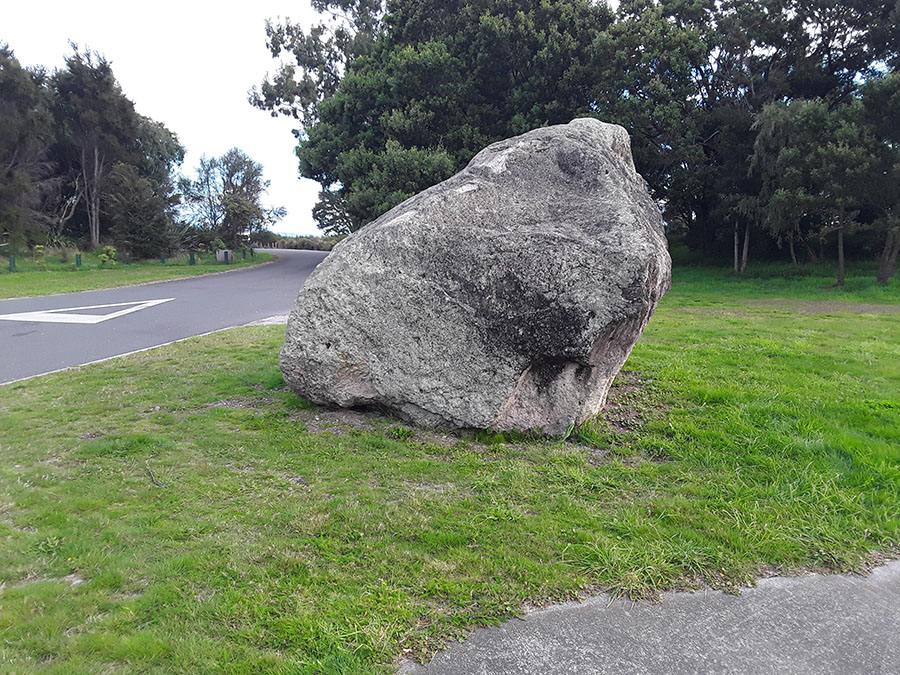
MORE OF THE NGATI-HOTU (OR ANCESTORS) SOLAR OBSERVATORIES & SURVEYING MARKERS IN THE TAUPO DISTRICT

At Wharewaka subdivision on the eastern shores of the lake near the Taupo airport lays this huge volcanic boulder composed of compressed ash. It was semi-excavated from the ground when the new subdivision was being built around the year 2004 and now sits in situ near the entryway to the subdivision and adjacent public-park. While half the boulder is light and clean, indicating that part was underground in pumice soil until recently, the other half is darkly stained with centuries of lichen, showing it was exposed to the elements for a very long time.
In 2004, local historian, Graham Parminter made this researcher aware of a strange manmade feature in the newly excavated boulder. He’d noticed a very obviously carved seat, complete with a footrest, where the seated individual had two backrests for sitting at viewing angles somewhat above 90-degrees opposed.
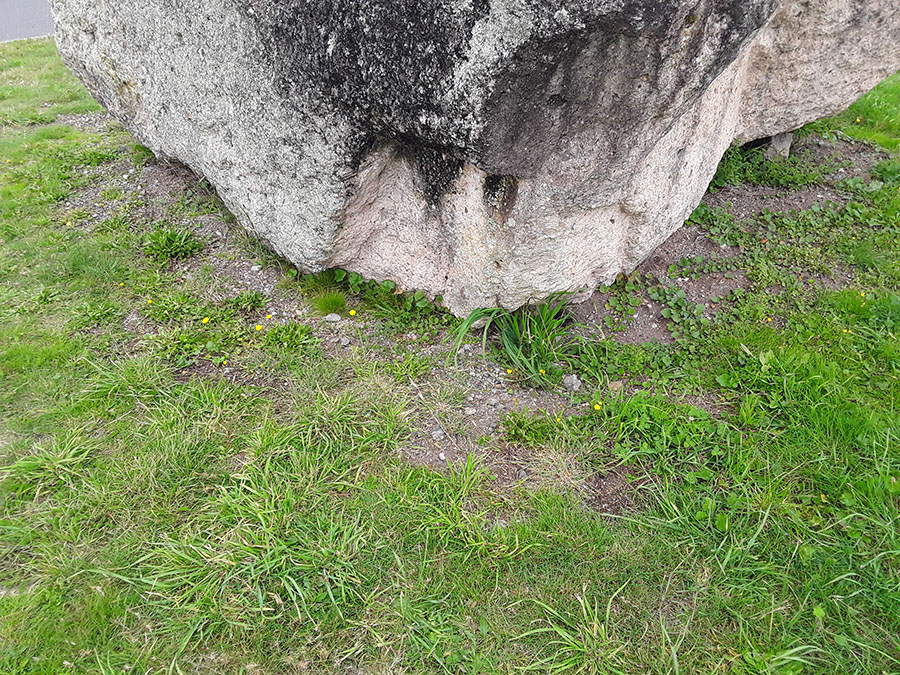
The carved seat is very clearly hand hewn upon close-up inspection and an absence of the black-stain lichen over most of the seat shows it was underground until the boulder was unearthed during recent-era subdivision excavations.

This photo shows the part of the boulder that was exposed to the elements for centuries, in contrast to the part that lay underground. The question therefore arises: What was the purpose of this huge, boulder, modified by ancient human hands. In Europe, such seats, hewn by pre-Christian Pagans, became known as “devil’s chairs”, gratis of the latter Christians.
In a purely local sense it acted as an equinoctial solar observatory for the rising sun, which occurred on Maunganamu Hill about 2-degrees North of due East at 88-degrees. Because of the relatively high elevation of Taupo, the equinoctial sun, rising at 90-degrees at the sea horizon, has to climb through terrain on a slight-diagonal, northerly angle to finally emerge at about 88-degrees.
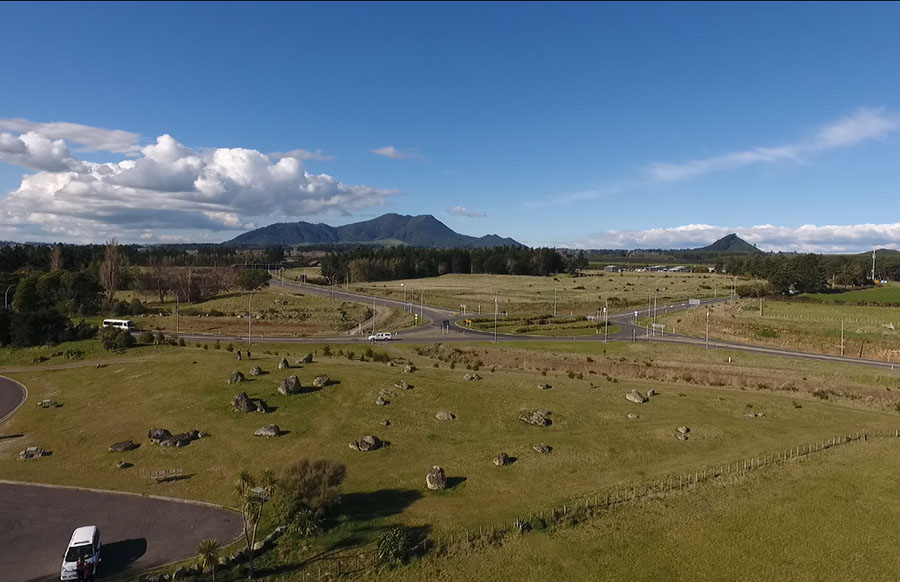
Adjacent to the “devil’s chair” is an ancient assembly area composed of huge standing stones. Behind it can be seen Mount Tauhara to the centre-left, the high point of which represents the winter solstice sunrise position from the “devil’s chair”. This would occur at 55.222-degrees on the high northernmost rim of the crater.
To the right of the picture is seen pyramidal shaped Maunganamu Hill and from the “devil’s chair” this acts as the outer marker for the equinox rises twice a year. The rise position on Maunganamu Hill would occur at 87.8375-degrees at the highest point of the hill.
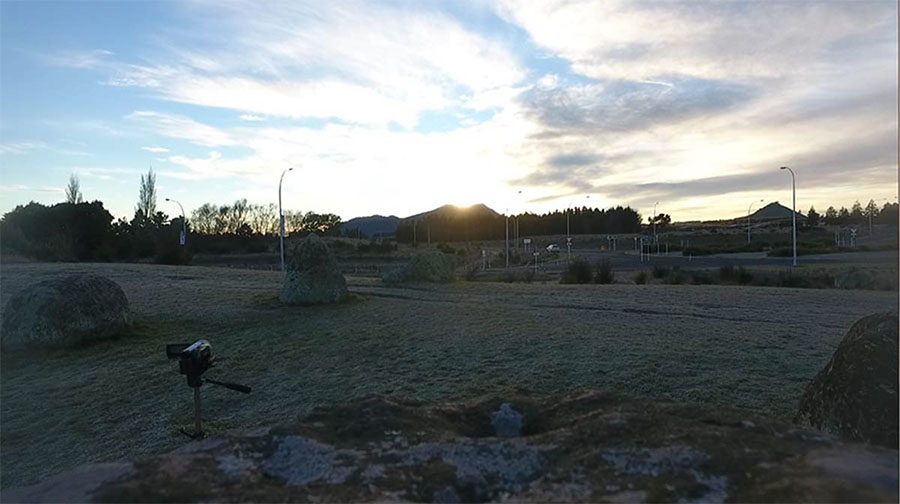
The winter solstice sun rising from the centre of Mount Tauhara's volcanic cone, as witnessed from the hubstone of the assembly area's standing stone array.
Alternatively, from the assembly area, situated 185 metres SE of the devil’s chair, the general population could witness the winter solstice sun rising from the volcanic crater of Mt Tauhara. This was in keeping with a practice that they attempted to duplicate, wherever possible, across New Zealand … that of returning fire to the extinct, dormant or active volcanoes, seemingly in a gesture of adoration of the fiery sun-god.
Likewise, from the assembly area celebrants of the seasonal milestones could witness the equinoctial sun to rise on the southern slopes of Maunganamu mountain and climb up the slope to launch itself into the sky. This practice of having the sun rise from the base of a mountain or mound and climb the slope was also a practice often adhered to when setting up the observer’s position for a solar observatory.
All across ancient New Zealand, just as in ancient Europe, at solar aligned assembly areas such as this, gatherings would take place to celebrate the significant calendar or seasonal points arrived at during the annual journey of the sun up and down the horizon.
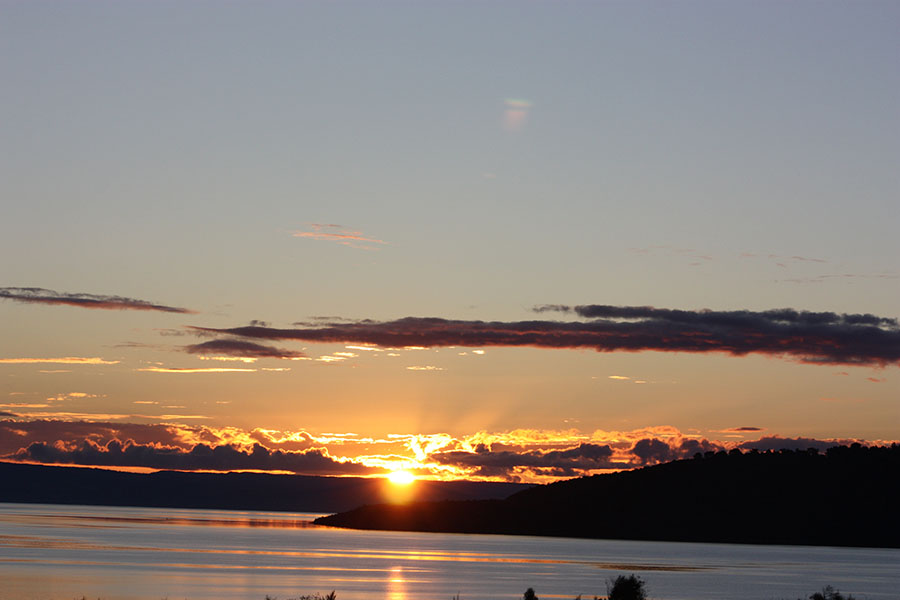
From the “devil’s chair” the equinoctial sun is seen to alight onto the westerly range just above Rangatira Point (Rangatira means chief), throwing light down onto the former position of Ponui Pah (fortress). Most of the so-called Pah-fortresses in New Zealand are remnant structures built by the more ancient, original inhabitants and the majority had no defensive capability at all, but acted as domestic communities devoid of any threat of warfare. Many such laboriously tiered structures doubled as solar observatory positions in their own right or sat upon overland surveying and solar path alignments set up for wayfarers crossing the country from coast-to-coast.
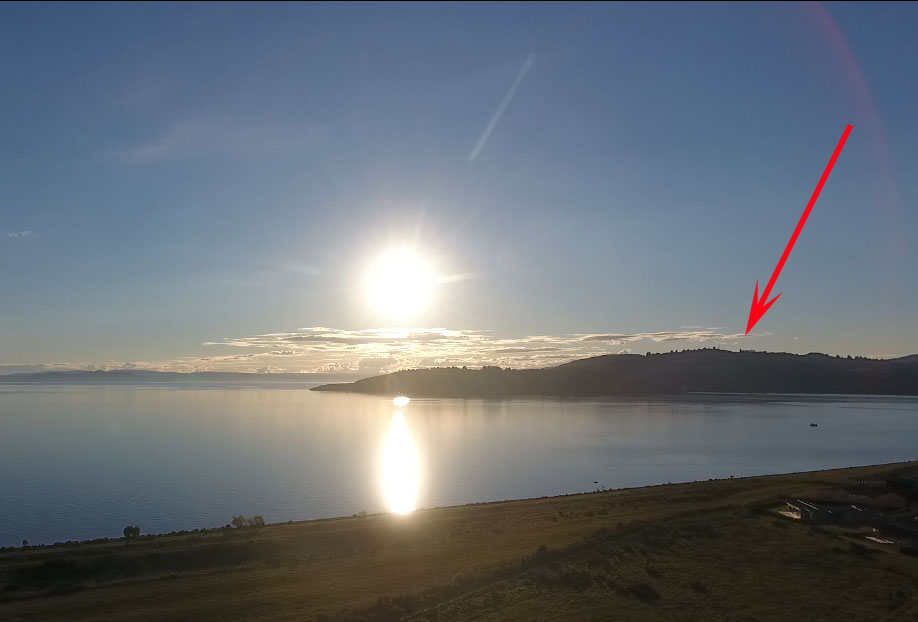
Whereas from the “devil’s chair” position the equinoctial sun is observed to alight on the range behind Rangatira Point, some 30-degrees further North, at the time of the winter solstice, it angles down and lands slightly north of the tower on Tuhingamata Hill. It would then melt into the hill, sending its afterglow up to illuminate the whole hill crown. The landing position would be at 301.91 degrees or only 2800-feet (850-metres) north of the ancient equinox obelisks of Tuhingamata Hill. Alternatively, when witnessed from the community assembly area, the sun would land at the northern base of Tuhingamata hill, with the last glints of the sun’s orb visible on the crown.
The “devil’s chair” is therefore multi-functional for precise fixes on equinoctial and solstice events, including the summer solstice sunset.